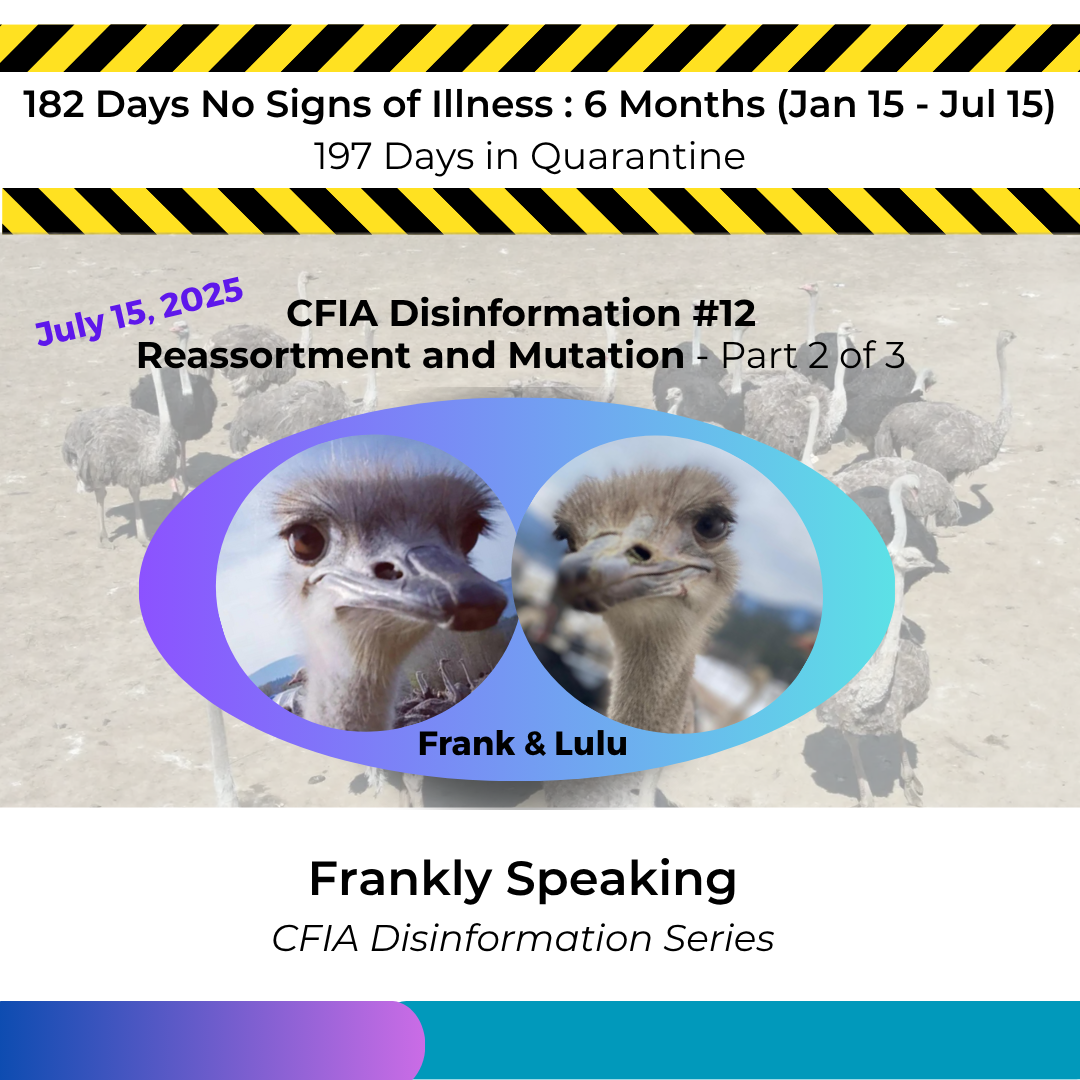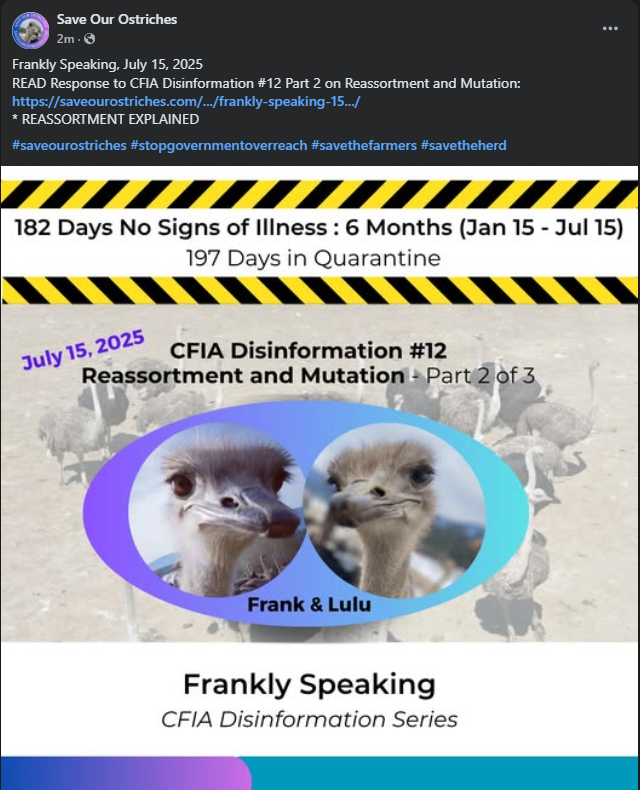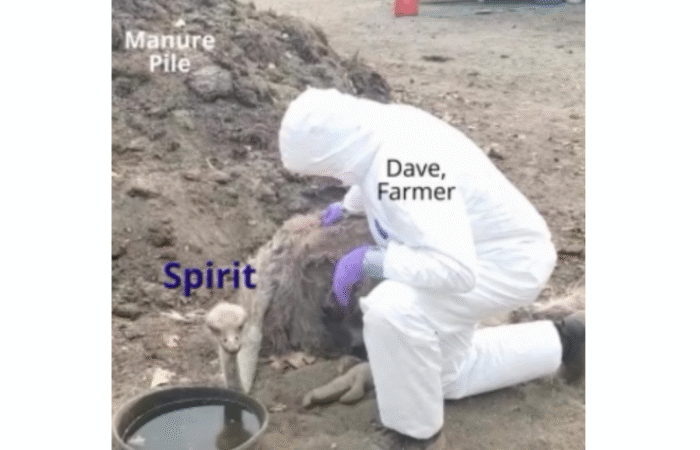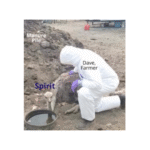July 15, 2025

Edgewood, BC
Disinformation Response to two CFIA Statements (May 31, 2025):
- Update on the CFIA’s actions at an HPAI infected premises at a BC ostrich farm
- CFIA’s basis for applying disease control measures at an avian influenza infected ostrich farm
CFIA Disinformation #12 Part 2 of 3 – (HPAI) … increases the risk of reassortment or mutation of the virus, particularly with birds raised in open pasture where there is ongoing exposure to wildlife. CFIA’s National Centre for Foreign Animal Disease (NCFAD) identified that the current HPAI infection in these ostriches is a novel reassortment not seen elsewhere in Canada.
Response: REASSORTMENT EXPLAINED
What is Reassortment? Reassortment is when pieces of genetic material (gene segments) are shared following infection with two or more different strains of viruses— such as found in influenza viruses—when they infect the same cells in an animal at the same time. The resulting newly formed viral particles may feature a mix of the genes from the two strains resulting in a new hybrid strain. This can happen naturally or be done intentionally in a lab. The influenza genome has 8 gene segments that can be intermixed during reassortment.
Reassortment was first described in the 1960s by virologist Dr. Robert G. Webster1. Reassortment is different from mutation, which is a natural change in a virus’s genetic code over a longer time period. Mutation happens slowly and is part of how viruses adapt and evolve.
Most reassortment events in bird flu (avian influenza) involve LPAI (low-pathogenic avian influenza) viruses. These usually cause only mild illness in birds. Wild ducks, which often carry LPAI without getting sick, are natural sources of these viruses and help spread reassorted versions during migration.
In labs, scientists can intentionally cause reassortment by infecting cells or animals with two different viruses at once. This is done under strict safety controls, usually in BSL-3+ (high biosafety) labs.
This kind of lab-based reassortment is used to:
• Study how viruses evolve and how dangerous they can become
• Test if new virus combinations could cause increased infectivity and virulence (called gain-of-function research)
However, gain-of-function research is controversial. It is banned or strictly controlled in many countries. Sometimes, it may still be carried out in labs in countries with fewer rules, which raises safety concerns.
References:
- Webster et al. first described reassortment in 1967 (Webster, R.G. et al., 1967, Journal of Virology) https://www.youtube.com/watch?v=4zONbkE1J5E – Dr. Robert G. Webster speaking on reassortment
Lulu has joined Frank … Fed Up with Feds Falsehoods. Tune in regularly for Frankly Speaking episodes in the CFIA Disinformation series.
Media Contact:
Katie Pasitney
Spokesperson, Eldest Daughter, Universal Ostrich Farm
1-250-870-8246
Share This Story








